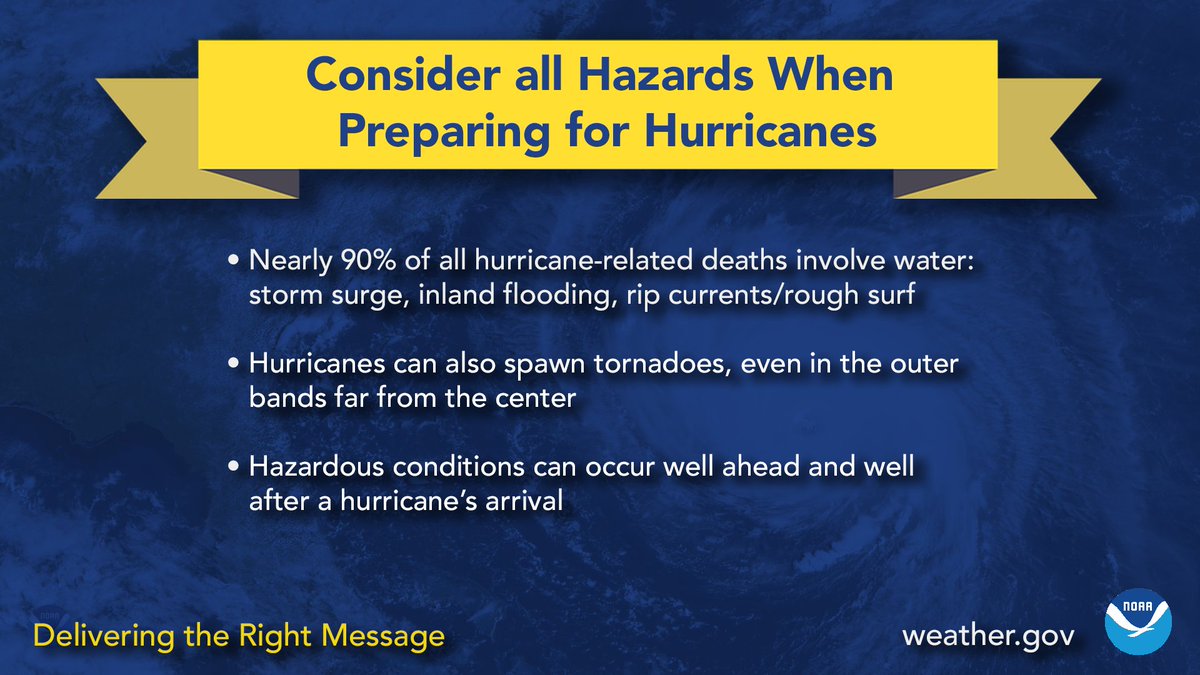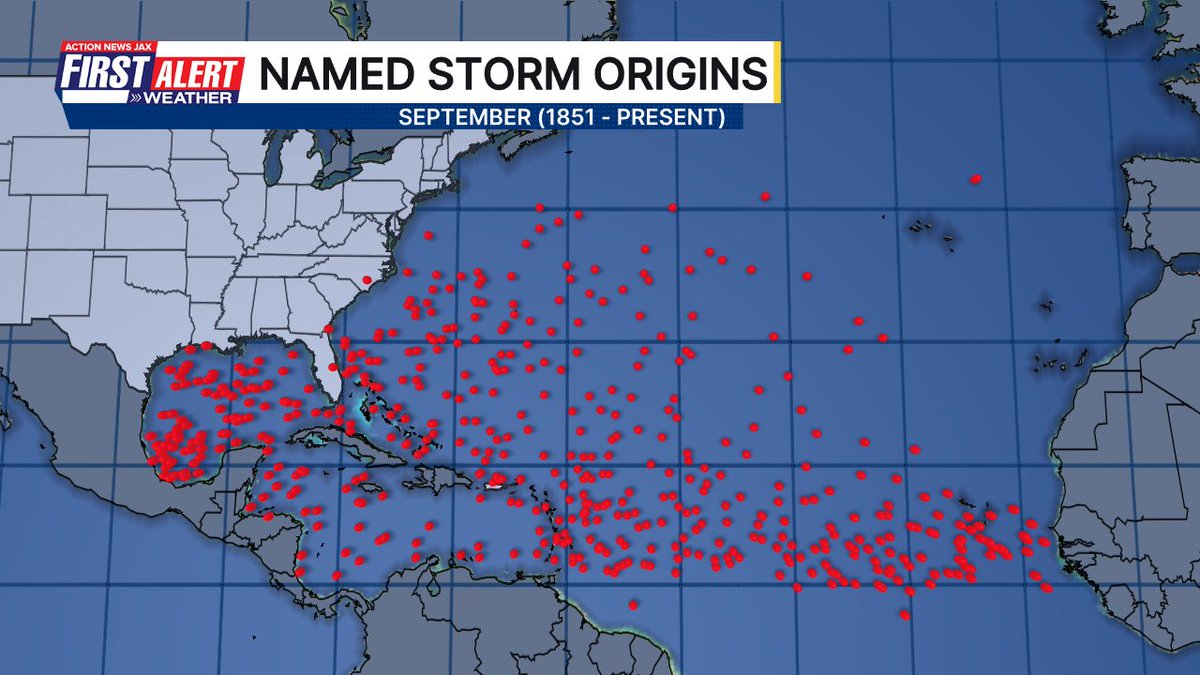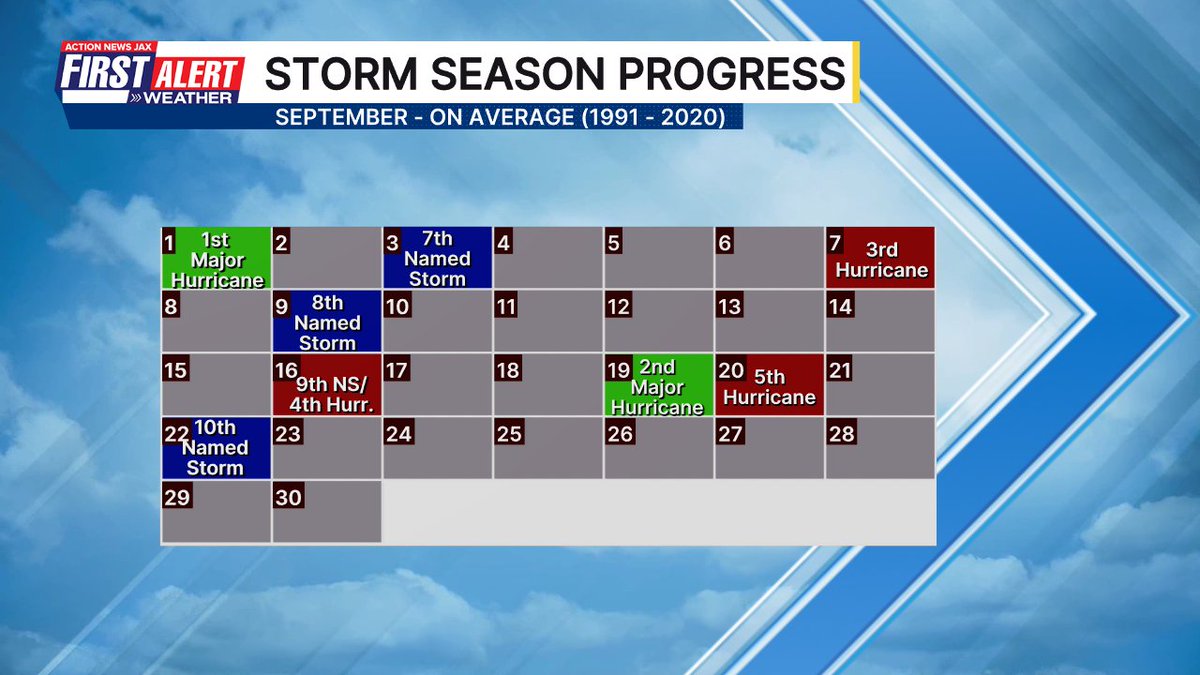Jacksonville, Fl. — THE TROPICS:
***** ALWAYS CHECK & RE-CHECK THE LATEST FORECAST & UPDATES! ****
Tropics threats/impacts for Jacksonville/NE Florida/SE Georgia: Even with no direct “hits” from tropical systems... rough seas & surf much of this week into the upcoming weekend along with dangerous rip currents... windy... & some on-&-off rain bands moving west off the Atlantic.
The Atlantic Basin Overview:
The Atlantic hurricane season is June 1st through Nov. 30th.
Hurricane WARNING: Bermuda
Tropical depression #9 was upgraded to tropical storm “Imelda early Sunday afternoon over the Bahamas... then to a hurricane Tue. morning. Model trends continue to show a hurricane that abruptly turns east totally missing the U.S. southeast coast this week but Imelda will be a direct threat to Bermuda by later Wed. into Thursday.
The upper level trough over the Eastern U.S. & the positioning of the Bermuda high to the east over the Atlantic are the main drivers for steeringImelda. While it appears there will not be much direct interaction between Humberto & Imelda, the softening of the ridge to the north that will turn Humberto looks like it will also be the “out” for Imelda. There also appears to be some outflow “contamination” from Imelda helping to interfere with the outflow of Humberto - which is now a shadow of its former powerful self.
(1) Imelda went hurricane after gradually organizing over very warm water despite occasional incursions of dry air as well as some variable, at times fairly strong wind shear. A turn to the northeast is underway insuring no direct threat to the U.S. An upper level trough to the west should also help ventilate the system in the upper levels helping to make conditions more favorable for strengthening.
Virtually all long range forecast models - European, GFS, Canadian & UKMET continue to show Imelda’s sharp turn to the east/northeast over the Atlantic following behind once powerful Humberto. Google DeepMind follows suit after showing only weak or modest development last week or sometimes merging with Humberto.
Despite no U.S. landfall, a strong onshore - out of the east/northeast - flow/wind will occur for much of this week making for rough seas & surf + a high rip current risk at the beaches. Easterly swells from both Imelda & Humberto will pummel east coast beaches into the upcoming weekend.
(2) ‘93-L’ was upgraded to “Humberto” Wed. afternoon & became a hurricane early Friday & reached “major” (Cat. 3+) status late Friday & was a Cat. 5 for a time Saturday. It’s interesting that each Atlantic hurricane this season has become a “major” (Erin, Gabrielle, Humberto). Humberto will follow in the wake of Gabrielle but a little more west (closer to Erin’s track last month) which will mean some outer bands for Bermuda into early Wed. as Humberto moves by to the west & north of the island. Humberto will turn more sharply northeast while weakening & losing tropical characteristics over the North Atlantic.


Very warm water & lower shear values once #9 moves away from Hispaniola:
7-Day rainfall forecast:




Satellite microwave imagery of Imelda from CIMSS:




‘Velocity potential anomalies’ below. shows “Rising” air (green lines) equates with an uptick in overall convection. With rising air, conditions are generally more favorable for tropical development. Where there are brown lines, the air is generally sinking & is often less conducive to tropical cyclones (though not impossible to have development).

The “Buresh Bottom Line”: Always be prepared!.....First Alert Hurricane Preparation Guide... City of Jacksonville Preparedness Guide... Georgia Hurricane Guide.
STAY INFORMED: Get the * FREE * First Alert Weather app
FREE NEWS UPDATES, ALERTS: Action News Jax app for Apple | For Android
WATCH “Preparing for the Storm”
WATCH “The Ins & Outs of Hurricane Season”
READ the First Alert Hurricane Center “Preparation Guide”
LISTEN “First Alert Weather: Preparing for the Storm”
Federal Alliance for Safe Homes (FLASH) * here *.
REMEMBER WHEN A TROPICAL STORM OR HURRICANE IS APPROACHING: Taping windows is *not* recommended & will not keep glass from breaking. Instead close curtains & blinds.
Realize the forecast cone (”cone of uncertainty”) is the average forecast error over a given time - out to 6 days - & *does not* indicate the width of the storm &/or where damage might occur.
The map below shows the *average* time for a tropical wave coming off Africa to travel west & northwest. Only about 1 in 5 tropical waves - on average - become a tropical cyclone of some sort (depression/storm/hurricane):






Water vapor loop (dark blue/yellow is dry mid & upper level air):

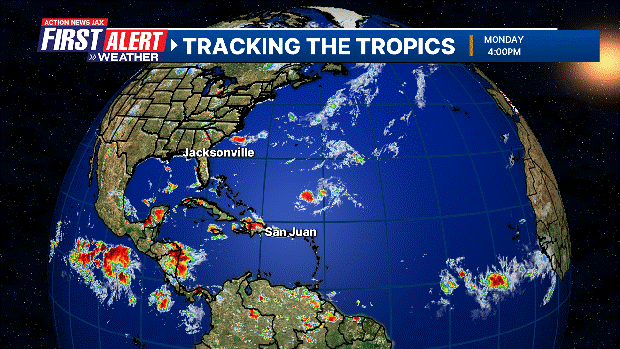
September Atlantic tropical cyclone origins:
Averages below based on climatology for the Atlantic Basin for September:
Wind shear (red - strong shear; green - low shear). Shear is typically strong to start the hurricane season:




Saharan dust spreads west each year from Africa driven by the prevailing winds (from east to west over the Atlantic). Dry air = yellow/orange/red/pink. Widespread dust is indicative of dry air that *can* interfere with the development of tropical cyclones. However, sometimes “wanna’ be” waves will just wait until they get to the other side of - or away from - the dust plume then try to develop if other conditions are favorable (we saw this with Beryl & Debby last year). It’s my personal opinion that there is way too much “hoopla” about the presence of Saharan dust & how it relates to tropical cyclones. In any case, the peak of Saharan dust typically is in June & July, & we are indeed seeing a large “blobs” of Saharan dust over the Central & Eastern Atlantic that’s thinning with westward extent but enough of it to make for hazy skies across the Caribbean & - at times - across parts of Florida.
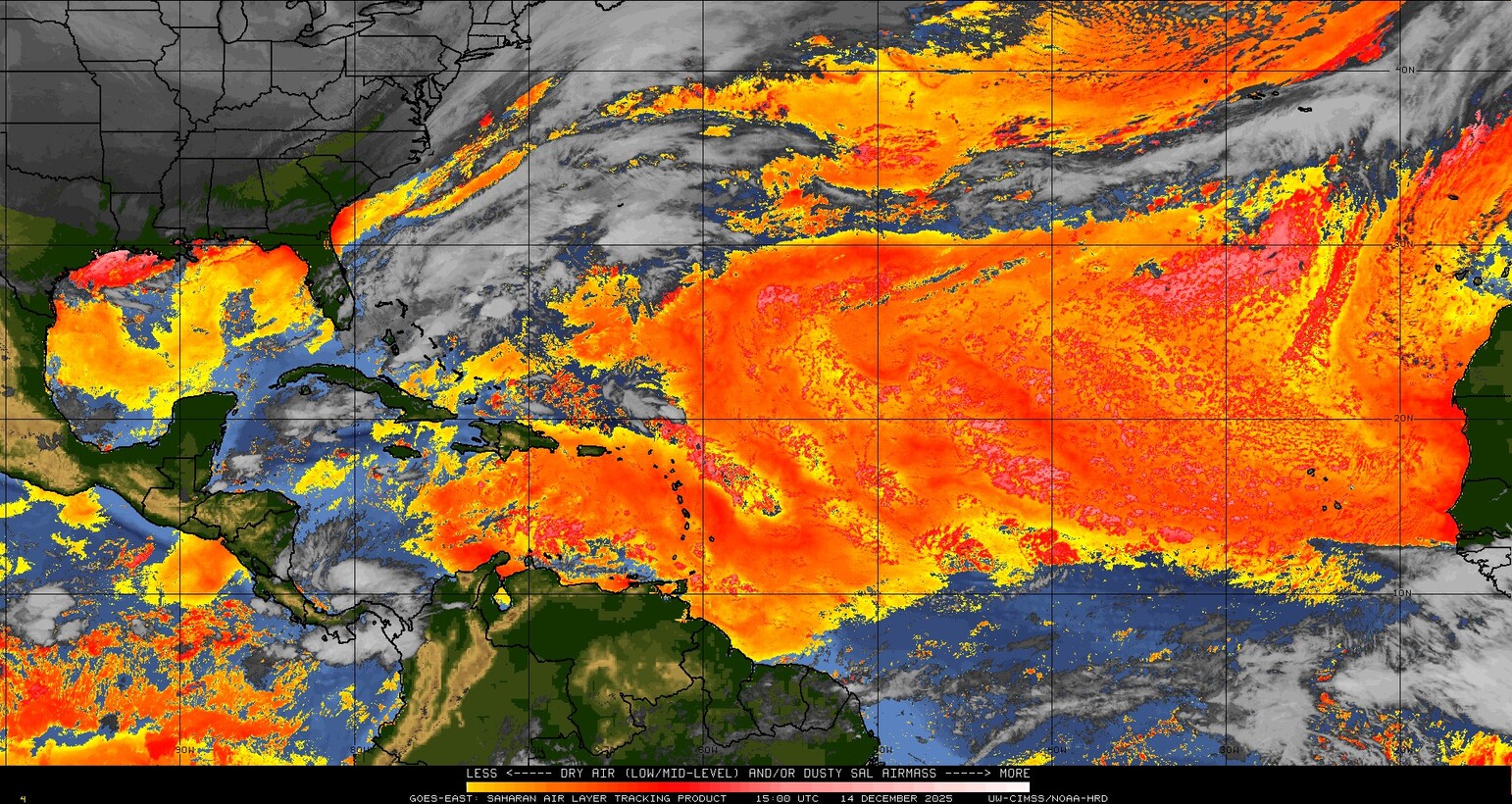
2025 names..... “Jerry” is the next name on the Atlantic list (names are picked at random by the World Meteorological Organization... repeat every 6 years). Historic storms are retired [Florence & Michael in ’18... Dorian in ’19 (the last time this year’s list was used) ... Laura, Eta & Iota in ‘20 ... Ida in ‘21 ... Fiona & Ian in ‘22... no names were retired in ‘23 for the first time since 2014... & Beryl, Helene & Milton last year in 2024]). The WMO decided - beginning in 2021 - that the Greek alphabet will be no longer used & instead there will be a supplemental list of names if the first list is exhausted (has only happened three times - 2005, 2020 & 2021). The naming of tropical cyclones began on a consistent basis in 1953. More on the history of naming tropical cyclones * here *.

Hurricane season climatology:
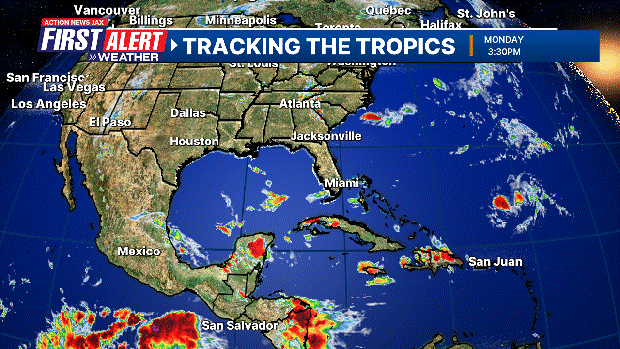



East Atlantic:




Mid & upper level wind shear (enemy of tropical cyclones) analysis (CIMMS). The red lines indicate strong shear:
Water vapor imagery (dark blue indicates dry air):

Deep oceanic heat content over the Gulf, Caribbean & tropical Atlantic. The colors will brighten greatly as the water warms to greater depths deeper into the season. It’s worth noting that the deep oceanic heat content right now is not as high as this time last year.

Sea surface temps.:

Sea surface temp. anomalies:

SE U.S. surface map:

Surface analysis centered on the tropical Atlantic:

Surface analysis of the Gulf:

Caribbean:

Atlantic Basin wave period forecast for 24, 48, 72 & 96 hours respectively:





This past spring I visited the west coast of Florida - from Cedar Key to Tampa Bay - to see how the area is recovering from the very rough ‘24 hurricane season namely Helene & Milton:
East & Central Pacific:





Central Pacific:

Hawaii satellite imagery:


West Pacific:
Global tropical activity:
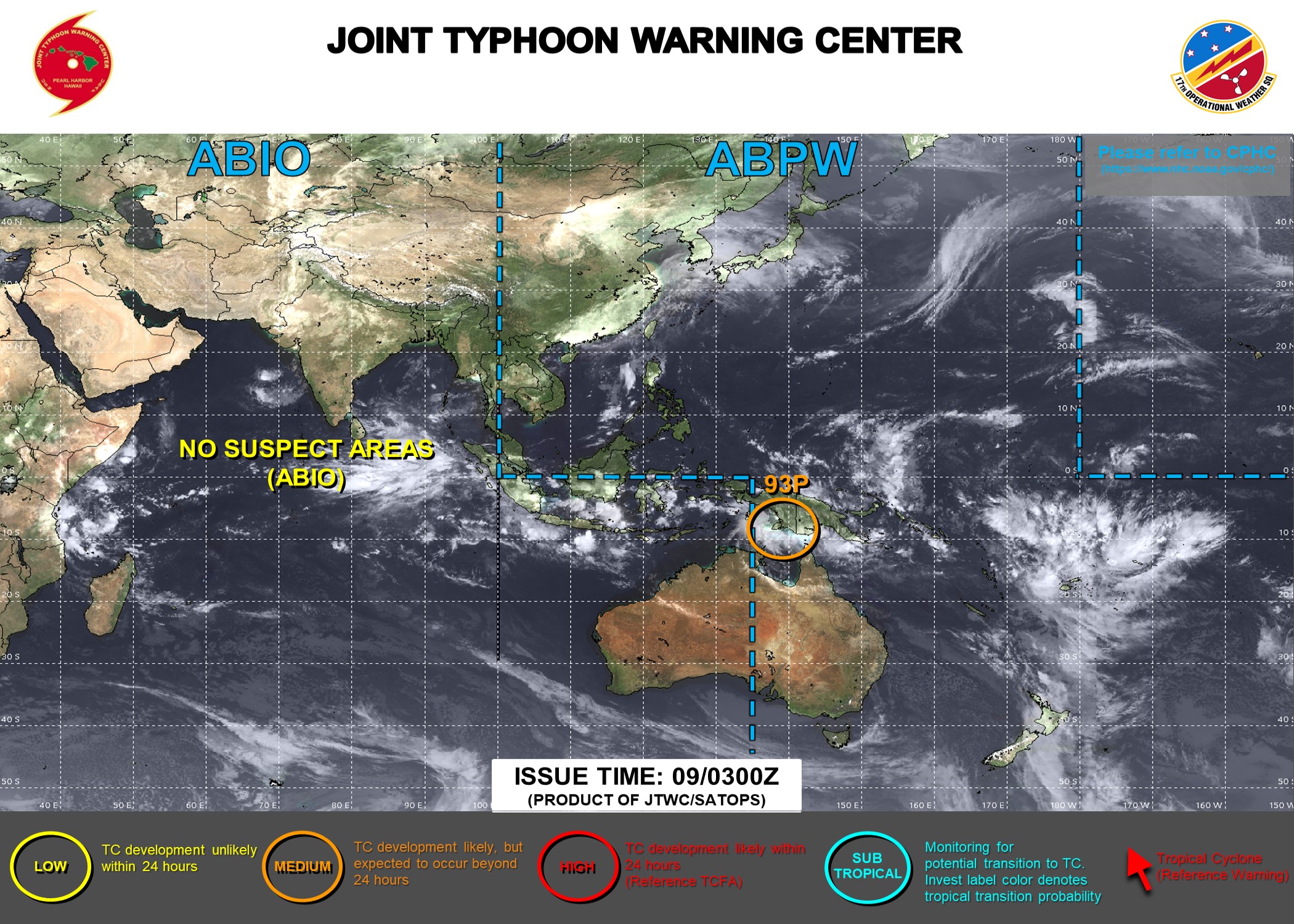
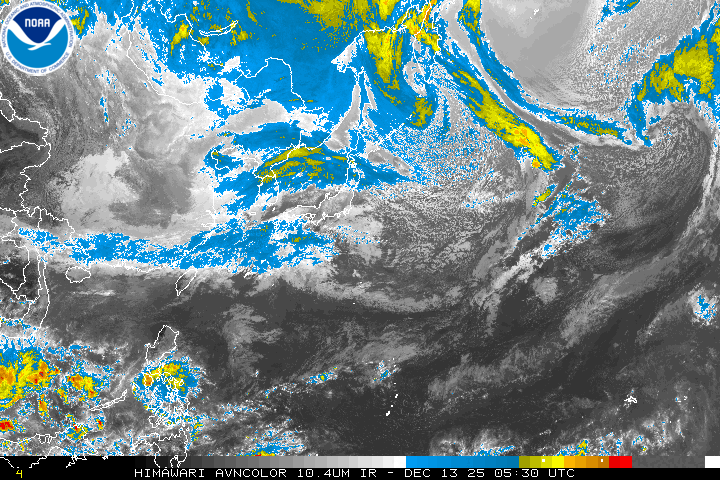


Cox Media Group


